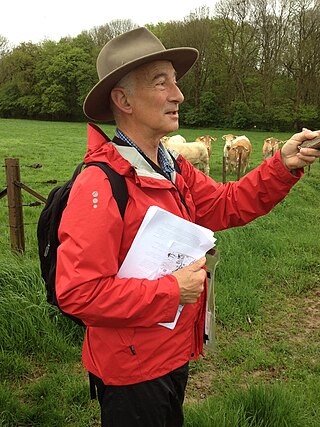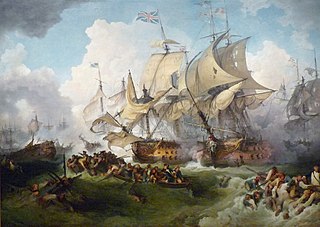Related Research Articles

Kensal Green Cemetery is a cemetery in the Kensal Green area of North Kensington in the Royal Borough of Kensington and Chelsea in London, England. Inspired by Père Lachaise Cemetery in Paris, it was founded by the barrister George Frederick Carden. The cemetery opened in 1833 and comprises 72 acres (29 ha) of grounds, including two conservation areas, adjoining a canal. The cemetery is home to at least 33 species of bird and other wildlife. This distinctive cemetery has memorials ranging from large mausoleums housing the rich and famous to many distinctive smaller graves and includes special areas dedicated to the very young. It has three chapels and serves all faiths. It is one of the Magnificent Seven cemeteries in London.

Castles are buildings that combine fortifications and residence, and many were built within the borders of modern Scotland. They arrived in Scotland with the introduction of feudalism in the twelfth century. Initially these were wooden motte-and-bailey constructions, but many were replaced by stone castles with a high curtain wall. During the Wars of Independence, Robert the Bruce pursued a policy of castle slighting. In the Late Middle Ages, new castles were built, some on a grander scale as "livery and maintenance" castles that could support a large garrison. Gunpowder weaponry led to the use of gun ports, platforms to mount guns and walls adapted to resist bombardment.

In Great Britain and former British colonies, a Victorian house generally means any house built during the reign of Queen Victoria. During the Industrial Revolution, successive housing booms resulted in the building of many millions of Victorian houses which are now a defining feature of most British towns and cities.
Ronald Joseph Pearsall was an English writer whose scope included children's stories, pornography and fishing.

Joseph d'Aguilar Samuda was an English engineer and politician. He was born in London the younger son of Abraham Samuda, and brother of Jacob Samuda. He started out in his father's counting-house, but in 1832 he joined his elder brother to set up Samuda Brothers.

Mark Izrailevich Dvoretsky was a Russian chess trainer, writer, and International Master.
A Kenneth Hudson was a journalist, museologist, broadcaster and book author.
Thrupp is a hamlet just north of Kidlington in Oxfordshire. It is beside the Oxford Canal and close to the River Cherwell.

Paul Rowley Atterbury, FRSA is a British antiques expert, known for his many appearances since 1979 on the BBC TV programme Antiques Roadshow. He specialises in the art, architecture, design and decorative arts of the 19th and 20th centuries.
John Sponlee was an English Gothic architect, responsible for the Dean's Cloister at Windsor Castle (1353).

William de Ramsey was an English Gothic master mason and architect who worked on and likely designed the two earliest buildings of the Perpendicular style of Gothic architecture. William Ramsey was likely an inventor of the Perpendicular style which was to dominate Gothic architecture in England for three centuries "and, if so, he was one of the most influential architects England has ever produced".

Charles Fitzroy Doll JP, FRIBA (1850–1929), was an English architect of the Victorian and Edwardian eras who specialised in designing hotels. He also designed the dining room on the RMS Titanic, which was based on his design for that in the Hotel Russell in Bloomsbury.

The architecture of Scotland in the Middle Ages includes all building within the modern borders of Scotland, between the departure of the Romans from Northern Britain in the early fifth century and the adoption of the Renaissance in the early sixteenth century, and includes vernacular, ecclesiastical, royal, aristocratic and military constructions. The first surviving houses in Scotland go back 9500 years. There is evidence of different forms of stone and wooden houses exist and earthwork hill forts from the Iron Age. The arrival of the Romans led to the abandonment of many of these forts. After the departure of the Romans in the fifth century, there is evidence of the building of a series of smaller "nucleated" constructions sometimes utilizing major geographical features, as at Dunadd and Dumbarton. In the following centuries new forms of construction emerged throughout Scotland that would come to define the landscape.

New Classical architecture, New Classicism or Contemporary Classical architecture is a contemporary movement in architecture that continues the practice of Classical architecture. It is sometimes considered the modern continuation of Neoclassical architecture, even though other styles might be cited as well, such as Gothic, Baroque, Renaissance or even non-Western styles – often referenced and recreated from a postmodern perspective as opposed to being strict revival styles.
Golborne South railway station was one of two stations serving the town of Golborne, to the south of Wigan.

Joseph Hudson (1778-1854) was a veteran of the battle of the Glorious First of June and later a tobacconist to the British royal family who ran a cigar divan in Oxford Street, London.
George Walter (1790–1854) was an English entrepreneur, known for his involvement with early railways of the 1830s.

The statue of John Betjeman at St Pancras railway station, London is a depiction in bronze by the sculptor Martin Jennings. The statue was designed and cast in 2007 and was unveiled on 12 November 2007 by Betjeman's daughter, Candida Lycett Green and the then Poet Laureate Andrew Motion to commemorate Betjeman and mark the opening of St Pancras International as the London terminus of the Eurostar high-speed rail link between Great Britain and mainland Europe. The location memorialises the connection between St Pancras station and Betjeman, an early and lifelong advocate of Victorian architecture.

Perpendicular Gothic architecture was the third and final style of English Gothic architecture developed in the Kingdom of England during the Late Middle Ages, typified by large windows, four-centred arches, straight vertical and horizontal lines in the tracery, and regular arch-topped rectangular panelling. Perpendicular was the prevailing style of Late Gothic architecture in England from the 14th century to the 17th century. Perpendicular was unique to the country: no equivalent arose in Continental Europe or elsewhere in the British Isles. Of all the Gothic architectural styles, Perpendicular was the first to experience a second wave of popularity from the 18th century on in Gothic Revival architecture.
John William Griffith (1789–1855) was an English architect and surveyor.
References
- 1 2 3 Contemporary Authors, vols. 37–40, ed. Ann Every, Gale/Cengage Learning, 1979, p. 110
- ↑ "Reviews". The London Journal. 37: 56–66. 2012. doi:10.1179/174963212X13296107766034. S2CID 218676673.
- ↑ The Insurance Record, collected volume 69, Tudor Press, 1931, p. 399
- ↑ "James Stevens Curl Qualifications - Architectural Historian - James Stevens Curl".
- ↑ "Professor James Stevens Curl - Architectural Historian and Author - About JSC - James Stevens Curl".
- 1 2 Official website (Accessed 1 October 2014)
- ↑ "From Wikipedia to Roman coins: British Academy recognises excellence in the humanities and social sciences". The British Academy. Retrieved 5 October 2017.
- ↑ Curl, 1977, viii
- ↑ Making Dystopia: The Strange Rise and Survival of Architectural Barbarism, James Stevens Curl, Oxford University Press, p. xxxvi